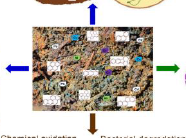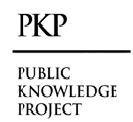Polycyclic Aromatic Hydrocarbon (PAHs) Pollutants: Toxic Organic Compounds, Hydrocarbons and Indicators of Exposure To Xenobiotic
Keywords:
Pollutants, Polycyclic Aromatic Hydrocarbon, Hydrocarbons, XenobioticAbstract
Anthropogenic pollution, particularly that which persists over time, is the primary cause of the global distribution of polycyclic aromatic hydrocarbons (PAHs). Because of their hydrophobicity, thermostability, and heterocyclic aromatic ring structures, PAHs are naturally resistant to degradation and remain in the environment for long periods of time. Multiple studies have shown that PAH contaminants are extremely harmful to different kinds of life, including mutagenic, carcinogenic, teratogenic, and immunotoxicogenic effects. Consequently, the main causes, pathways of exposure, and harmful effects of PAHs on humans are covered in this review. Physical and chemical methods for PAH remediation, including soil washing, adsorption, electrokinetic, thermal, oxidation, and photocatalytic treatments, are provided in a concise overview in this article. Environmentally friendly biological treatment options for PAH remediation, including microbial remediation methods utilising bacteria, archaea, fungus, algae, and co-cultures, are systematically compiled in this research. Bioremediation, biostimulation, bioaugmentation, land farming, bioreactors, and vermiremediation are some examples of in-situ and ex-situ biological treatments.
Downloads
References
Threshold limit values (TLVs) for chemical substances and physical agents and biological exposure indices (BEIs) 2002, American Conference of Governmental Industrial Hygienists, Cincinnati, OH, 2002.
Kennedy, G.L., Setting a threshold limit value (TLV): the process, Chem. Health Safety, 8, 13–15, 2001.
Nessel, C.S., A comprehensive evaluation of the carcinogenic potential of middle distillate fuels, Drug Chem. Toxicol., 22, 165–180, 1999.
Rozman, K.K. and Klaassen, C.D., Adsorption, distribution, and excretion of toxicants, in Casarett and Doull’s Toxicology: The Basic Science of Poisons, 6th ed., Klaassen, C.D., Ed., McGraw-Hill, New York, 2001, chap. 8, pp. 107–132.
Bond, J.A. and Medinsky, M.A., Insights into the toxicokinetics and toxicodynamics of 1,3-butadiene, Chem. Biol. Interact., 135/136, 599–614, 2001.
Boogaard, P.J., van Sittert, N.J., and Megens, H.J.J.J., Urinary metabolites and hemoglobin adducts as biomarkers of exposure to 1,3-butadiene: a basis for 1,3-butadiene cancer risk assessment, Chem. Biol. Interact., 135/136, 695–701, 2001. #
Bruckner, J.V. and Warren, D.A., Toxic effects of solvents and vapors, in Casarett and Doull’s Toxicology: The Basic Science of Poisons, 6th ed., Klaassen, C.D., Ed., McGraw-Hill, New York, 2001, chap. 24, pp. 869–916.
Tornero-Velez, R. and Rappaport, S.M., Physiological modeling of the relative contributions of styrene-7,8-oxide derived from direct inhalation and from styrene metabolism to the systemic dose in humans, Toxicol. Sci., 64, 151–161, 2001.
Rappaport, S.M. and Yeowell-O’Connell, K., Protein adducts as dosimeters of human exposure to styrene, styrene-7,8-oxide, and benzene, Toxicol. Lett., 108, 117–126, 1999.
Gosselin, R.E., Smith, R.P., and Hodge, H.C., Naphthalene, in Clinical Toxicology of Commercial Products, 5th ed., Williams & Wilkins, Baltimore, 1984, pp. III-307–III-311.
Fox, D.A. and Boyes, W.K., Toxic responses of the ocular and visual system, in Casarett and Doull’s Toxicology: The Basic Science of Poisons, 6th ed., Klaassen, C.D., Ed., McGraw-Hill, New York, 2001, chap. 17, pp. 565–595.
Rubin, H., Synergistic mechanisms in carcinogenesis by polycyclic aromatic hydrocarbons and by tobacco smoke: a biohistorical perspective with updates, Carcinogenesis, 22, 1903–1930, 2001.
Roth, M.J. et al., High urine 1-hydroxpyrene glucuronide concentrations in Linxian, China, an area of high risk for squamous esophageal cancer, Biomarkers, 6, 381–386, 2001
Draper, W. et al., Industrial hygiene chemistry: keeping pace with rapid change in the workplace, Anal. Chem., 71,
33R–60R, 1999. (A comprehensive review of this topic is published every two years in Analytical Chemistry.) 2. Atio, A., Special issue: biological monitoring in occupational and environmental health, Sci. Total Environ., 199, 1–226, 1997.
Barany, E. et al., Inductively coupled plasma mass spectrometry for direct multielement analysis of diluted human blood and serum, J. Anal. At. Spectrosc., 12, 1005–1009, 1997.
Paschal, D.C. et al., Trace metals in urine of United States residents: reference range concentrations, Environ. Res., 76, 53–59, 1998.
Schroers, H.-J. and Jermann, E., Determination of physiological levels of volatile organic compounds in blood using static headspace capillary gas chromatography with serial triple detection, Analyst, 123, 715–720, 1998.
Ojanpera, I., Pihlainen, K., and Vuori, E., Identification limits for volatile organic compounds in the blood by purge-and-trap GC-FTIR, J. Anal. Toxicol., 22, 290–295, 1998.
Agency for Toxic Substances and Disease Registry, U.S. Department of Health and Human Services, Toxicological Profile for Benzene, CD/ROM Version, CRC Press/Lewis Publishers, Boca Raton, FL, 1999.
Scherer, G., Renner, T., and Meger, M., Analysis and evaluation of trans,trans-muconic acid as a biomarker for benzene exposure, J. Chromatogr. B Biomed. Sci. Appl., 717, 179–199, 1998.
Boogaard, P.J. and Van Sittert, N.J., Suitability of S-phenyl mercapturic acid and trans-trans-muconic acid as biomarkers for exposure to low concentrations of benzene, Environ. Health Perspect. Suppl., 104, 1151–1157, 1996.
Angerer, J., Schildbach, M., and Kramer, A., S-toluylmercapturic acid in the urine of workers exposed to toluene: a new biomarker for toluene exposure, Arch. Toxicol., 72, 119–123, 1998.
De Ruij, B.M. et al., Allylmercapturic acid as urinary biomarker of human exposure to allyl chloride, Occup. Environ. Med., 54, 653–661, 1997.
Rappaport, S.M. et al., An Investigation of multiple biomarkers among workers exposed to styrene and styrene-7,8-oxide, Cancer Res., 56, 5410–5416, 1996.
Wengatz, I. et al., Recent developments in immunoassays and related methods for the detection of xenobiotics, ACS Symposium Series 646 (Environmental Immunochemical Methods), American Chemical Society, Washington, D.C., 1996, pp. 110–126.
Griffin, P., Jones, K., and Cocker, J., Biological monitoring of polychlorinated biphenyls in plasma: a comparison of enzyme-linked immunosorbent assay and gas chromatography detection methods, Biomarkers, 2, 193–195, 1997.
Kussak, A. et al., Determination of aflatoxicol in human urine by immunoaffinity column clean-up and liquid chromatography, Chemosphere, 36, 1841–1848, 1998.
Ball, L. et al., Immunoenrichment of urinary S-phenylmercapturic acid, Biomarkers, 2, 29–33, 1997

Downloads
Published
How to Cite
Issue
Section
License

This work is licensed under a Creative Commons Attribution 4.0 International License.
Current Clinical and Medical Education













